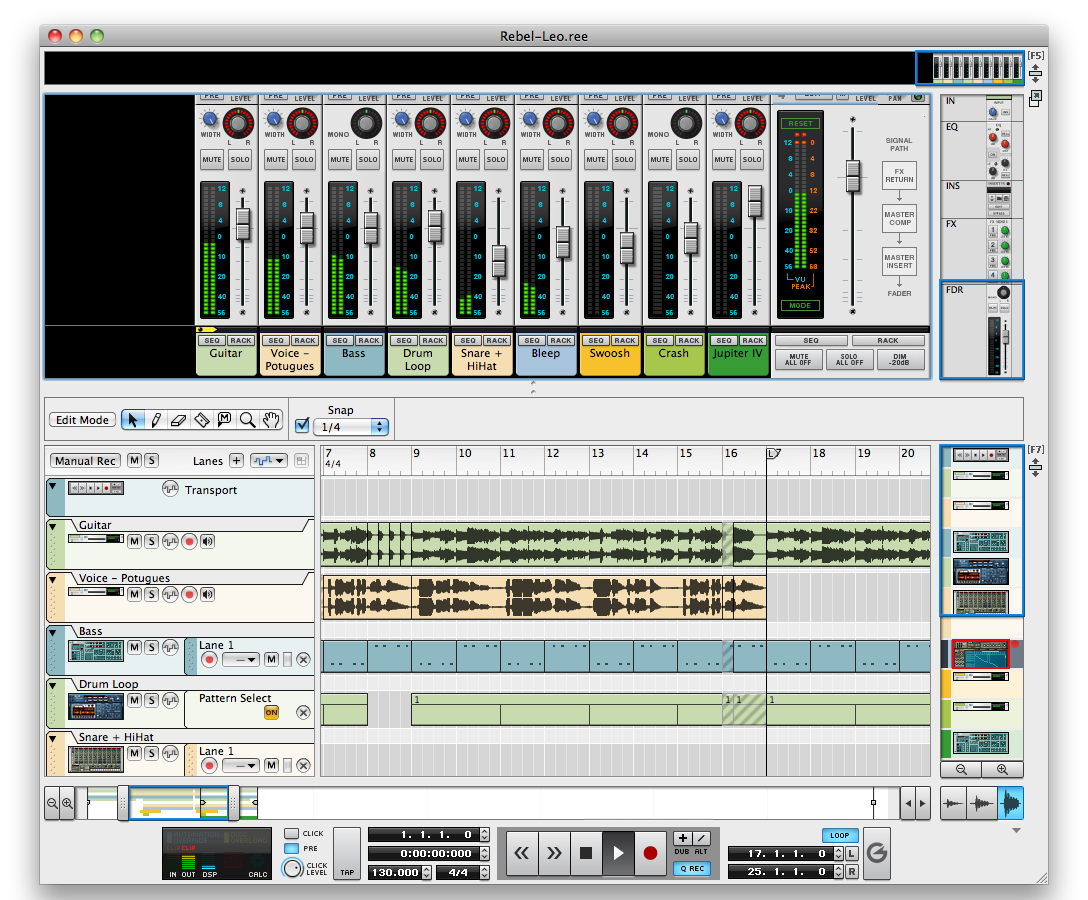

You can also patch effects directly into them.

There are a few aspects of how they work, though, that are worth noting.įirstly, they are not just a conduit to the mixer. In no time at all, the presence of a bunch of Audio Track and Mix devices should feel completely familiar for Reason upgraders. Now every instrument has a Mix device 'shadow', and as you add effects to instruments, they get patched in between the instrument and the Mix device. In old versions of Reason, you'd see just instruments and effects devices in the rack. And Mix devices show up in partnership with any individual or Combinator instruments you create. Audio Track devices are created automatically whenever you create an Audio Track - in a very real sense they are the Audio Track. These communicate with the mixer via an invisible, virtual 'P‑LAN' connection.Ī lot of the time you never have to think about these new devices, or interact with them in any way. Basically, any channel you see in the mixer has a counterpart in the rack, in the form of either an Audio Track device or a Mix device. Notice how an RV7000 reverb has been inserted into the Mix device, almost as if it was a Combinator.Ĭreating a mixer with virtually unlimited tracks, but without causing cabling pandemonium on the back of the rack (well, no worse than usual, anyway.) doesn't seem like an easy task, but the Propellerhead nerds were equal to it and have come up with a nifty solution. Here's a Thor synth with its Mix device counterpart. This pops up a big, floating, well‑calibrated meter window. If the input level meter doesn't give you enough feedback - I always wish there was some clearer calibration - you can choose Recording Meter from the Window menu. It works incredibly easily: you play the note you want to tune, and Reason figures out the target pitch and guides you up or down. However, there are some other cool options to explore.Ĭlicking the tuning fork button switches the input level meter into a tuning display, ideal for guitarists. That'll often be all you need to know to get stuck into recording. It'll activate automatically, or not, according to the monitoring mode you've chosen in Preferences (see the 'Audio Options' box). The green button - Enable Monitoring for Track - routes the input to the track's output. This is also where you choose between a mono and stereo input, and hence whether it's a mono or stereo track. You choose which inputs from your interface it'll record via the pop‑up menu next to the level meter. The button above, currently lit green, enables track monitoring.Īdding an audio track to your sequence is as easy as hitting Command‑T (OS X) or Ctrl‑T (Windows). Audio TracksĪn audio track in the sequencer: the buttons next to the level meter let you choose a hardware input and engage the built‑in tuner. It sports a better and more configurable rack and acquires a great new modular‑style mixer that's ready for songs of any complexity, so the nightmare of managing multiple Remix 14:2 devices should be well and truly gone. There are no confusing spin‑offs, application combinations, or feature overlaps. With the inclusion of audio recording, it can now rightfully claim to be a full‑blown DAW, capable and characterful, all by itself. The dawn of version 6 brings to a close a slightly awkward period in Reason's development. Look familiar? It's essentially the old Reason/Record duo in one rack.

Reason 6 in all its glory - modular mixer, multiple racks, audio tracks. This month, we offer some essential techniques for getting up to speed with it. Version 6 is a new dawn for Reason users.


 0 kommentar(er)
0 kommentar(er)
